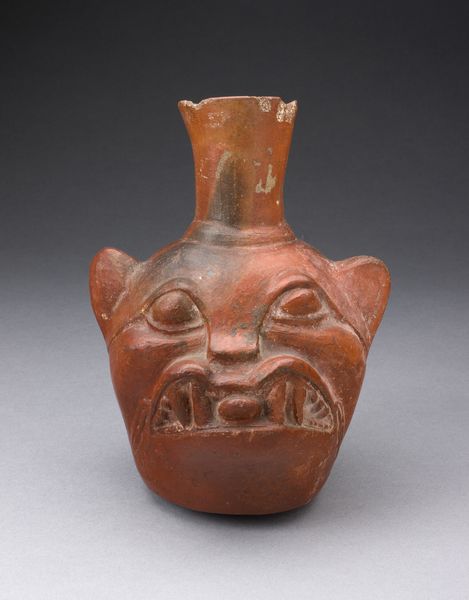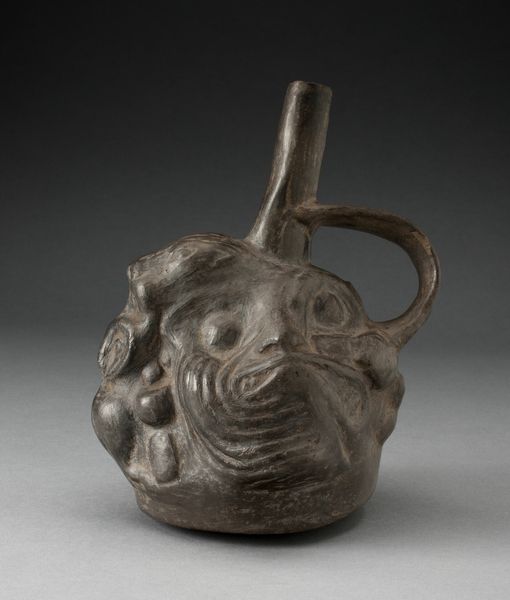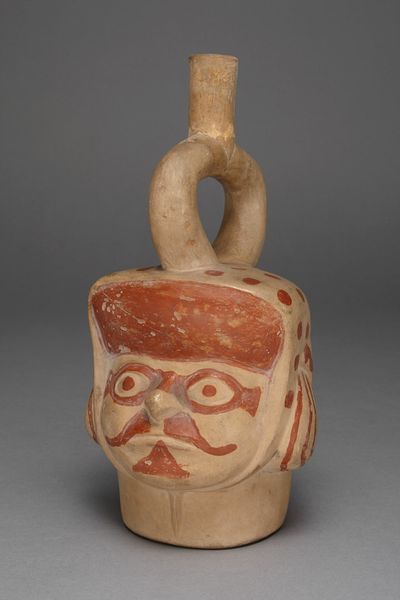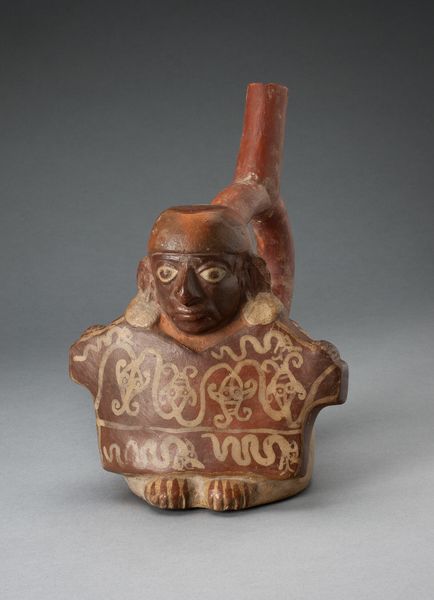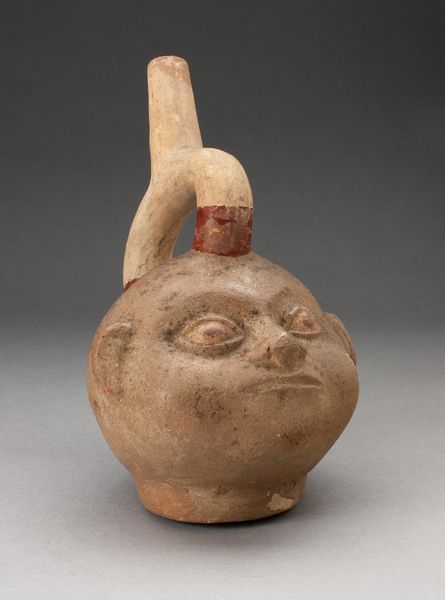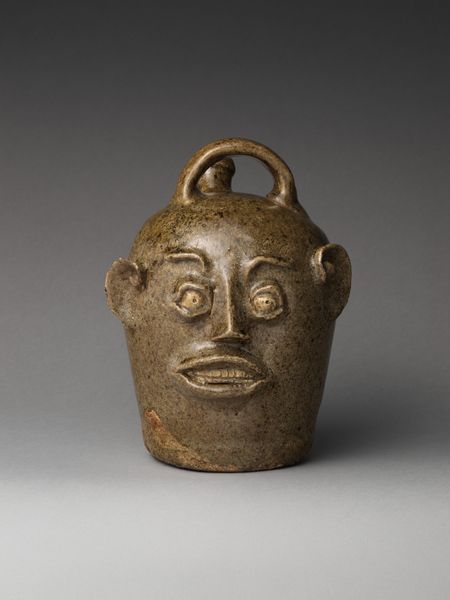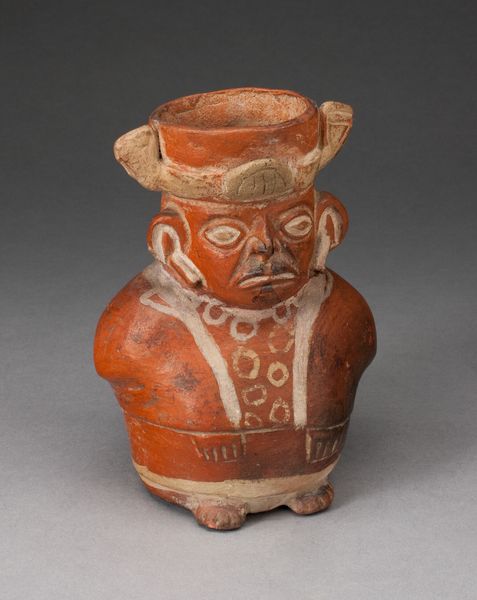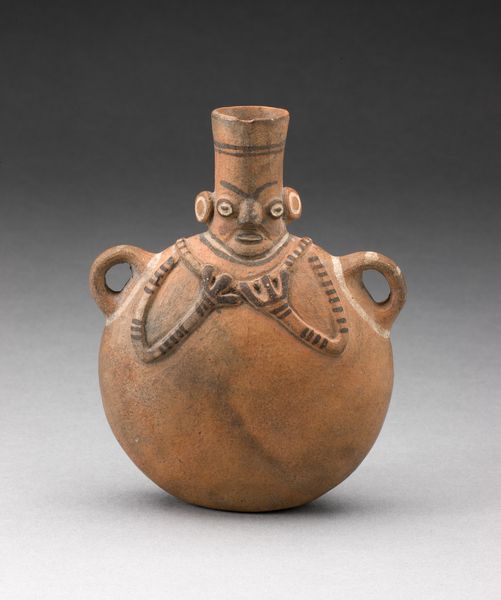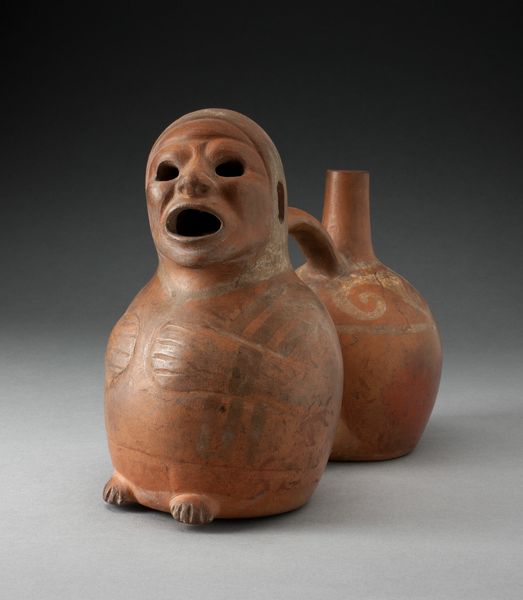
Stirrup Spout Vessel in Form of a Head, Possibly Ai-Apec c. 100 - 500
0:00
0:00
ceramic, sculpture, terracotta
#
portrait
#
ceramic
#
figuration
#
sculpture
#
terracotta
#
indigenous-americas
Dimensions: 22.5 × 14.6 × 12.7 cm (8 7/8 × 5 3/4 × 5 in.)
Copyright: Public Domain
Curator: Immediately striking! It's like looking into the heart of an ancient mystery. That raw, earthy quality – what are your thoughts on it? Editor: The object we're looking at, crafted by the Moche people around 100 to 500 AD, is titled "Stirrup Spout Vessel in Form of a Head, Possibly Ai-Apec". You can find it here at The Art Institute of Chicago. Its principal material is ceramic. Curator: The vessel’s face seems caught between a sneer and a snarl – all while maintaining this curious elegance. Imagine the artisan's hands shaping the clay, coaxing forth this face... Were they depicting a god, a warrior, some other honored figure? What did those clayworkers' hands know that we've forgotten? Editor: Well, let's not romanticize it too much! The Moche were highly skilled in ceramic production. Standardized molds and specialized workshops were common, indicating a complex, even industrial, level of ceramic manufacturing that supported a hierarchical society. Each step of production, from clay sourcing to firing, held its own social implications, no doubt reflecting power dynamics within the Moche culture. Curator: A-ha, so we are still just skimming the surface. Still, you can feel this vital life force imbued into the ceramic itself! Think about how that handle—that "stirrup"—bridges not just the body of the vessel but, dare I say, the worlds of form and function. Is it useful? Definitely! Is it beautiful? Irrefutably. What narratives and meanings do you think were embedded in the production of a utilitarian, everyday object like this vessel? Editor: The repetition and volume speak to broader patterns of consumption and ritual. Who drank from it and what exactly? Those answers could unravel a network of economic relations embedded in agricultural cycles, social feasts, or state-sponsored ceremonies. This little clay pot, for example, could illuminate everything from the allocation of surplus resources to political maneuvering. Curator: Amazing how a single piece can bring to mind so many different elements: power, creation, the ancient dance between the mundane and the divine... It's just wonderful to have this ancient story resonating across millennia. Editor: Absolutely. Examining these objects isn't just about art history; it’s about material histories, labor histories, and the echoes of the forgotten makers.
Comments
No comments
Be the first to comment and join the conversation on the ultimate creative platform.
